
Before you confidently answer “yes” to the question “Are you a good driver?”, pause for a moment of reflection. A study conducted by psychological scientists suggests that most people perceive themselves as great drivers, even when reality tells a different story. This isn’t about pointing fingers or labeling anyone as “bad behind the wheel”; it’s about acknowledging that driving is a complex skill, and like any skill, there’s always room for growth and refinement, regardless of your current proficiency level. The road is an unpredictable environment, and enhancing your driving capabilities isn’t just a personal achievement—it’s a critical commitment to the safety of yourself and everyone else sharing the asphalt.
Even if you believe you navigate the roads with expertise, the desire to improve is a natural and commendable one. For those who acknowledge areas for development, this curated collection of practical tricks and actionable advice is precisely what you need. Our aim is to empower every driver to become more confident, more aware, and ultimately, less dangerous on the roads. It’s about getting ahead of the game, transforming theoretical knowledge into instinctive, life-saving habits.
No matter how impressive your current driving record, embracing these insights can profoundly impact your confidence in the car and your overall safety. We’ve compiled a list of essential, expert-backed tips designed to provide immediate, tangible improvements to your driving style. These aren’t just arbitrary suggestions; they are proven methods to sharpen your senses, improve your control, and foster a more proactive approach to every journey. Dive in and discover how to unlock your full driving potential and become the best version of yourself behind the wheel.

1. Take a Defensive Driving Course Online
Part of being an truly excellent driver involves a crucial mindset shift: you must operate under the assumption that other drivers around you might not be at their best. This isn’t about arrogance or judgment; it’s a foundational principle of safety. Adopting a defensive driving posture means you are constantly prepared to safely maneuver your vehicle if another driver makes a critical error that could endanger you.
Defensive driving equips you with the strategies and foresight to anticipate potential hazards and react effectively to them, preventing accidents before they happen. It’s about building a buffer of safety around your vehicle, not just in terms of distance, but in terms of mental preparedness. This proactive approach ensures you’re not caught off guard by sudden braking, unexpected lane changes, or distracted behavior from others.
The good news is that these vital defensive driving skills are entirely teachable and accessible. Services like Aceable or iDriveSafely offer comprehensive online defensive driving courses that you can complete from the comfort of your home. These platforms break down complex scenarios into understandable lessons, providing you with the knowledge to make quicker, safer decisions under pressure.
Enrolling in such a course offers more than just practical skills; it also provides a valuable refresher on traffic laws and best practices that you might have forgotten over time. It reinforces the importance of safe driving habits, helping you internalize them so they become second nature. This investment in your education translates directly into increased confidence and a palpable reduction in risk every time you hit the road.
Read more about: Brace Yourself: The 10 Cars That Instantly Trigger ‘Bad Driver’ Alarms on the Road

2. Learn Manual Transmission
While increasingly rare in many modern vehicles, the ability to drive a manual transmission car offers a unique and invaluable connection to your vehicle that automatic transmissions simply cannot replicate. Beyond the often-cited benefit of deterring car theft—many would-be thieves can’t drive stick—mastering manual transmission profoundly deepens your understanding of how your car truly operates.
This skill forces you to engage with the mechanics of your vehicle in a way that goes beyond simply pressing pedals. You learn to feel the engine, understand gear ratios, and anticipate power delivery. This intimate knowledge can be incredibly empowering, especially if you ever find yourself in a situation where an automatic transmission might unexpectedly fail. Knowing how to handle a clutch and shift gears gives you a greater sense of control and mechanical intuition.
Furthermore, driving a manual car is, for many, an incredibly fun and engaging experience once you overcome the initial learning curve. The satisfaction of smoothly shifting through gears and precisely controlling your vehicle’s power can transform routine commutes into more enjoyable drives. It adds an extra layer of skill and interaction that keeps you more alert and present behind the wheel.
The tactile feedback and constant mental engagement required for manual driving can translate into improved overall driving awareness. You become more attuned to the vehicle’s responses and the road conditions. This heightened sensory input helps refine your judgment and timing, making you a more versatile and capable driver in various situations, even when you return to an automatic.
Read more about: Beyond the Quarter-Million Mark: Our Shortlist of Cars Engineered for Extreme Longevity
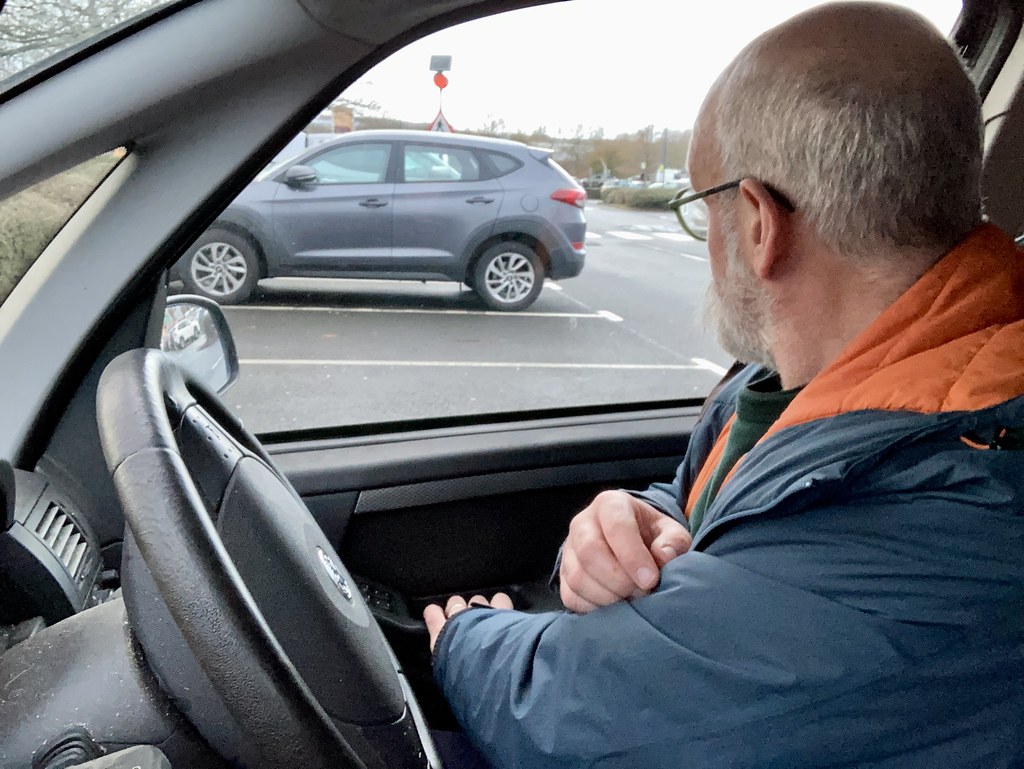
3. Adopt the “Dutch Reach”
Most drivers and passengers habitually open their car doors with the hand closest to the handle, a seemingly innocuous action that can, unfortunately, have dangerous consequences. This common practice often leads to a quick, casual glance rather than a thorough check of the surroundings, making you susceptible to unexpected hazards from the rear.
To significantly enhance your safety when exiting a vehicle, you need to consciously adopt the “Dutch Reach.” This simple yet incredibly effective technique involves using the hand furthest away from the door to grasp the handle. For example, if you’re the driver, you’d reach across with your right hand to open the door on your left side.
This deliberate action forces your body and head to turn sideways, naturally prompting you to look out the window over your shoulder. By performing this rotational movement, you gain a much clearer and broader view of approaching traffic, particularly cyclists and motorcyclists who can appear quickly and are often difficult to spot between parked cars. It essentially turns your blind spot into a visible area before you even begin to unlatch the door.
Preventing accidents, especially with vulnerable road users, is paramount. The Dutch Reach significantly reduces the risk of hitting someone with an opening door, whether you are the driver or a passenger. It’s a small adjustment in habit that yields enormous safety dividends, ensuring that your exit from the vehicle is as safe as your journey itself. Integrate this into your routine, and you’ll wonder how you ever managed without it.

4. Check Your Dashboard for Lights
Your car’s dashboard is a sophisticated communication hub, providing vital information about its operational health. Regularly checking your dashboard for illuminated warning lights is a non-negotiable aspect of responsible driving. Understanding what each color signifies is crucial for identifying potential problems before they escalate into serious, and costly, issues that could compromise your safety on the road.
Generally, dashboard lights are color-coded to indicate the severity and nature of the message. Green and blue lights are typically informational, letting you know that certain systems are operating as intended, such as your high beams being on or your cruise control being active. These are usually nothing to worry about and simply confirm normal vehicle functions.
Orange or yellow lights, however, serve as cautionary signals. These indicators mean that while your vehicle is still operational, there’s a problem that requires attention in the near future. This could range from a check engine light indicating an emissions issue to a low tire pressure warning. While not immediately critical, these lights signal that you should schedule a service appointment soon to prevent further damage or more significant problems down the line.
Red or flashing lights demand immediate attention and often indicate a critical issue that could impact your vehicle’s safety or performance. A red oil pressure light, a flashing brake warning, or an overheating engine light are all signals that you should pull over safely as soon as possible and address the problem. Ignoring these could lead to serious mechanical failure, extensive repairs, or even dangerous situations while driving. Addressing necessary repairs, like fixing a brake issue, promptly ensures these problems don’t compromise your future driving safety.
Read more about: Mechanics’ Top Frustrations: 14 Bad Car Habits You Need to Stop Now to Save Money and Your Vehicle’s Life

5. Adjust Your Mirrors for Optimal Vision
Many drivers assume their mirrors are correctly positioned simply because they offer some view of the rear and sides of the vehicle. However, the vast majority of people do not have their mirrors in truly optimal positions, inadvertently creating unnecessary blind spots and reducing their overall field of vision. Achieving maximum visibility is not just a convenience; it’s a fundamental safety measure.
The common mistake is adjusting side mirrors so that you can see a portion of your own car from the driver’s seat. This setup creates an overlap with your rearview mirror’s field of vision, essentially wasting valuable mirror space and leaving significant blind spots. To rectify this, a precise adjustment technique is required to maximize what you can see without unnecessary head movements.
Here’s how to set your mirrors for an expanded, overlapping-free view: First, ensure your main rearview mirror is adjusted so you can see straight out the back window without moving your head. Then, for your side mirrors, lean your head over the center console, almost directly in line with the rearview mirror. From this position, adjust your passenger-side mirror outward until you barely see the edge of your vehicle. Next, place your cheek against the driver’s side window and do the same, adjusting that mirror until you just lose sight of your vehicle’s side.
By adjusting your side mirrors from these specific leaned positions, you effectively eliminate the blind spots that often hide other vehicles, especially when changing lanes. This wider angle of vision not only makes you a safer driver by reducing hidden areas but also prevents you from being momentarily blinded by headlights and reflections at night. This subtle but powerful change dramatically improves your awareness of your surroundings in a split second.
Read more about: 10 SUVs That Hit 40 MPG Highway—And They’re Not Even Hybrids
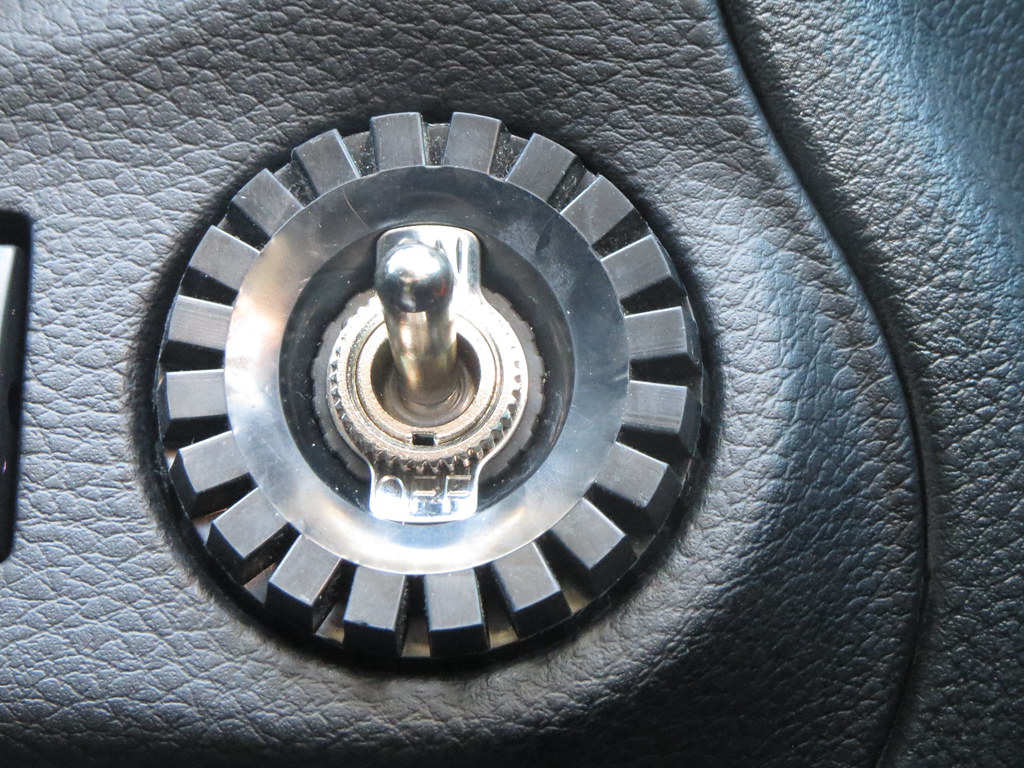
6. Use the Flip Switch on the Rearview
It’s a small, often overlooked detail on your rearview mirror, yet that tiny tab or button holds a powerful secret for safer nighttime driving: it’s a dimmer switch. Many drivers are completely unaware of this feature, enduring glaring headlights from vehicles behind them, which can be both irritating and dangerously distracting, especially on dark roads.
The purpose of this simple mechanism is to change the angle of the mirror’s reflective surface. When flipped, it redirects the intense light from following vehicles upward and away from your eyes, effectively softening the glare without significantly compromising your view of what’s behind you. This allows your eyes to remain adjusted to the lower light conditions of the road ahead, reducing strain and improving overall visibility.
Some older vehicles feature a physical tab that you push or pull to toggle between the two settings. Newer, more technologically advanced cars might have an electronic button that achieves the same dimming effect. Taking a moment to familiarize yourself with your car’s specific mechanism for this feature can make a world of difference when driving after dusk.
Leveraging this simple rearview mirror feature can instantly make you a much better and safer driver in low-light conditions. It reduces eye fatigue, minimizes visual distractions caused by bright lights, and allows you to focus more clearly on the road ahead and your immediate surroundings. It’s a trick that costs nothing but offers a significant improvement in comfort and safety during nighttime journeys.
Read more about: The Automotive Hall of Shame: 15 Infamous Rides and Their Reputations for Bad Drivers and Dangerous Flaws

7. Master Reverse and Parking Like a Pro
Reversing your vehicle confidently and accurately is a fundamental skill that every driver should master. You never know when you might encounter an unexpected situation, such as needing to back up a significant distance in an unfamiliar or tight space. Approaching such scenarios with confidence, rather than trepidation, is crucial for both safety and preventing minor mishaps.
Developing proficiency in reversing requires practice, practice, and more practice. The key is to become comfortable steering while simultaneously monitoring your surroundings, using both your mirrors and quick glances over your shoulder. Dedicate some time in an empty parking lot to practice navigating backward, learning how your vehicle responds to steering inputs when in reverse until it feels like a natural extension of your driving abilities.
Beyond simply reversing, becoming great at parking is another skill that significantly enhances your overall driving prowess and even impacts your personal reputation. There’s nothing more frustrating, or potentially embarrassing, than repeatedly correcting a parking job. Learning to get it right the first time not only saves you time and stress but also protects your car from unnecessary dings and scrapes.
One particular parking technique to master is backing into a parking spot. While it might seem counterintuitive at first, it’s actually considered safer than pulling in head-first and backing out later. Backing into a spot means you pull out facing forward, giving you a clearer view of oncoming traffic. You can practice this effectively in an empty lot by setting up two traffic cones to simulate other vehicles, honing your precision until you can execute it flawlessly, making parallel parking less of a chore and more of a triumph.
Read more about: Mechanics’ Top Frustrations: 14 Bad Car Habits You Need to Stop Now to Save Money and Your Vehicle’s Life
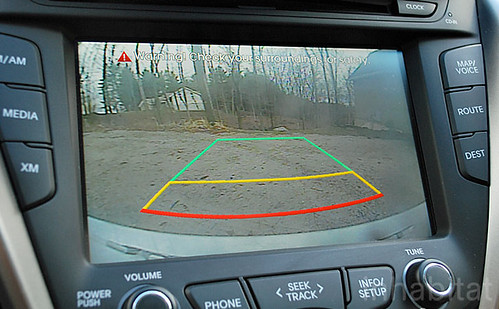
8. Install a Backup Camera
In an age where technology seamlessly integrates into our daily lives, embracing innovations that enhance safety on the road is a smart move. While some might initially scoff at the idea of needing a backup camera, perceiving it as a crutch, the utility and peace of mind these devices offer quickly turn skeptics into staunch advocates. Once you experience the clear, wide-angle view a backup camera provides, you’ll likely wonder how you ever managed to back up or navigate tight spaces without one.
Wireless backup cameras are particularly convenient, offering a relatively easy installation process without the hassle of extensive wiring. These systems provide an invaluable perspective on what’s directly behind your vehicle, an area notoriously difficult to fully assess even with meticulously adjusted mirrors and diligent head-turns. They dramatically reduce the risk of backing into unseen obstacles, parked cars, or, critically, pedestrians and small children.
The benefits extend beyond mere parking assistance; a backup camera enhances your situational awareness in any reverse maneuver. Whether you’re pulling out of a driveway, reversing down a narrow alley, or simply adjusting your position in a busy lot, the visual aid offers crucial information that traditional methods might miss. It fills in the gaps, providing a complete picture that complements your mirror checks and physical observations.
Even if installing a dedicated system isn’t feasible, modern solutions allow you to leverage the technology you already own. Many applications and setups enable you to use your smartphone as a backup camera, offering a cost-effective and accessible alternative. This immediate visual feedback empowers you to execute reverse maneuvers with greater precision and confidence, significantly contributing to a safer driving experience for everyone around you. Embrace this simple upgrade, and redefine your perception of safe reversing.
Read more about: Beyond the Hype: The Real Reasons Your New iPhone Isn’t Perfect (and How to Master the Fixes)
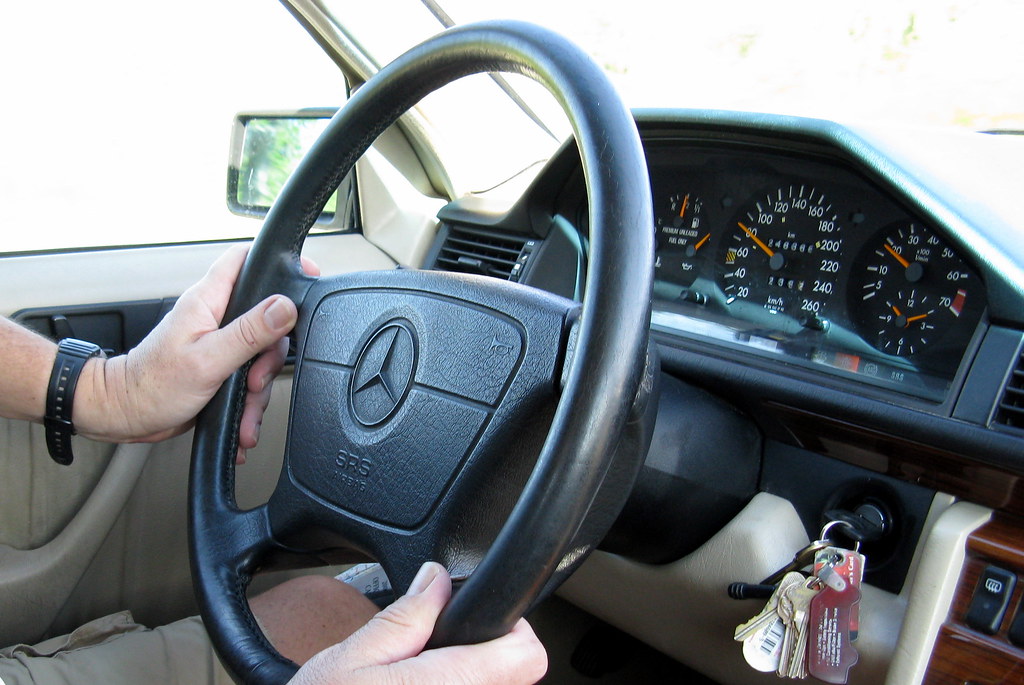
9. Keep Your Hands at 10 and 2
It might seem like a relic from driving school, but the simple act of positioning your hands correctly on the steering wheel, ideally at the ’10 and 2′ or ‘9 and 3’ positions (like a clock face), is far more critical than many drivers realize. This isn’t just about adherence to old rules; it’s about maintaining optimal control and readiness, transforming your reaction time and stability behind the wheel. It’s a foundational technique that empowers you to handle the unexpected.
When both hands are symmetrically placed on the steering wheel, you create a balanced leverage point, giving you maximum control over the vehicle’s direction. This symmetrical grip prevents over-steering in sudden maneuvers and allows for smoother, more precise adjustments. In an emergency, such as needing to swerve to avoid an obstacle or regain control during a skid, this hand position provides the mechanical advantage necessary for rapid, effective steering input.
Moreover, having both hands securely on the wheel keeps you constantly engaged with the driving task. It minimizes the temptation to engage in distracting behaviors, reinforcing a focus on the road. This sustained engagement is particularly vital in challenging conditions, like heavy rain, snow, or high winds, where the vehicle’s stability can be compromised, and quick, accurate steering corrections are paramount to safety.
Embracing this basic habit ensures you’re always prepared for the unpredictable nature of the road. It’s a subtle but powerful change that significantly enhances your ability to manage your vehicle, providing a solid foundation for advanced driving techniques and ultimately making you a more confident and safer driver in every situation. Make it a point to check your hand placement regularly—it’s a habit that pays off.
Read more about: From Teen Idol to Silver Fox: Christopher Atkins’ Unforgettable Journey of Hollywood Heights, Personal Battles, and Finding Peace

10. Minimize Distractions
In today’s hyper-connected world, distractions lurk everywhere, but few are as lethal as those encountered behind the wheel. Distracted driving is a pervasive issue, tragically contributing to approximately nine fatalities every single day in the United States. If you are serious about becoming a better, safer driver, actively minimizing distractions within your vehicle is not merely advisable; it is an absolute imperative for your safety and the safety of everyone sharing the road.
The most notorious culprit, of course, is the smartphone. Responding to texts, checking notifications, or engaging in phone calls while driving diverts your eyes, hands, and cognitive focus away from the critical task of operating a vehicle. Even a momentary glance can be enough to miss a sudden hazard, a change in traffic, or a pedestrian. This is why the simplest, most effective ‘trick’ is to proactively eliminate your phone as a source of distraction.
Putting your phone on silent, or even better, placing it out of reach—perhaps in your glove compartment, backseat, or even the trunk—can be a game-changer. This intentional act prevents alerts from grabbing your attention, breaking the cycle of impulse to check your device. By removing the physical and auditory cues, you empower yourself to remain present and focused exclusively on the road ahead, reducing your risk of a crash significantly.
Beyond phones, other distractions like excessively loud music, engaging in heated conversations with passengers, or even eating and drinking can diminish your awareness. Cultivating a driving environment that prioritizes focus means keeping the radio at a safe, non-intrusive volume and being mindful of internal conversations. By consciously managing these elements, you transform your car into a sanctuary of concentration, enabling you to drive more effectively and with greater safety.
Read more about: Unlock Your Brain’s Full Potential: 14 Science-Backed Habits to Outsmart ‘Brain Rot’ and Boost Your Cognitive Power

11. Know Your Route
One of the easiest ways to induce stress, confusion, and dangerous maneuvers while driving is to navigate an unfamiliar route without prior preparation. Fumbling with navigation systems, staring at a map on your console, or making last-minute, erratic lane changes at 70 miles per hour on the Interstate is an express ticket to trouble. A truly better driver understands the immense value of knowing where they’re going before the car even leaves the driveway.
Before you put your car in drive, take a moment to review your intended route, especially for new destinations or complex journeys. This preemptive step allows you to anticipate turns, exits, and potential traffic hotspots, drastically reducing the mental load while driving. When you understand the flow of the road ahead, you can make decisions calmly and deliberately, rather than in a panic, contributing to a smoother and safer travel experience.
If you are fortunate enough to have a passenger, leverage their presence by designating them as the co-pilot. They can manage the navigation, call out directions in advance, and alert you to upcoming changes, allowing you to keep your eyes fixed on the road. Trying to consult a map or GPS device yourself while operating a vehicle is a dangerous form of distracted driving and should always be avoided. Your full attention must remain on the environment outside your windshield.
Read more about: Who’s Still Bringing the Sunshine? Catching Up with the Enduring Cast of ‘Eight Is Enough’!

12. **Look Ahead**Becoming a truly adept driver isn’t just about reacting to immediate circumstances; it’s fundamentally about anticipation. One of the most powerful and transformative tricks you can adopt is to actively look ahead—way ahead—to constantly scan the road further in the distance than your immediate surroundings. This proactive gaze is a cornerstone of defensive driving, enabling you to foresee potential issues and respond gracefully, often preventing accidents before they even become a threat.
Becoming a truly adept driver isn’t just about reacting to immediate circumstances; it’s fundamentally about anticipation. One of the most powerful and transformative tricks you can adopt is to actively look ahead—way ahead—to constantly scan the road further in the distance than your immediate surroundings. This proactive gaze is a cornerstone of defensive driving, enabling you to foresee potential issues and respond gracefully, often preventing accidents before they even become a threat.
Instead of fixating solely on the bumper of the car directly in front of you, train your eyes to sweep the road hundreds of feet ahead. Look for brake lights illuminating in the far distance, observe traffic patterns unfolding several cars ahead, and scan for construction zones, merging traffic, or sharp turns that might require an early adjustment. This broad visual awareness gives you crucial extra seconds to process information and formulate a safe response.
This continuous scanning technique, often referred to as ‘keeping your head on a swivel,’ means actively tracking your surroundings every 5-10 seconds, not just directly ahead, but also utilizing your mirrors to understand what’s happening to your right, left, and rear. This constant engagement prevents tunnel vision and ensures you’re aware of the bigger picture, keeping you from getting fixated on any one thing for too long. It helps you stay engaged and adaptable.
By consistently looking far ahead and scanning your environment, you gain a significant advantage. You can anticipate sudden traffic halts, notice when a vehicle two lanes over might be preparing to merge, or spot a potential hazard well before it reaches your immediate vicinity. This foresight allows for smoother acceleration and braking, reduces the need for sudden, jarring maneuvers, and helps you avoid a multitude of common fender benders, keeping you ahead of the game.
Read more about: Carrie Ann Inaba’s Emotional Absence: Unpacking Her Health, the DWTS Family’s Support, and What Lies Ahead for Season 34’s Premiere
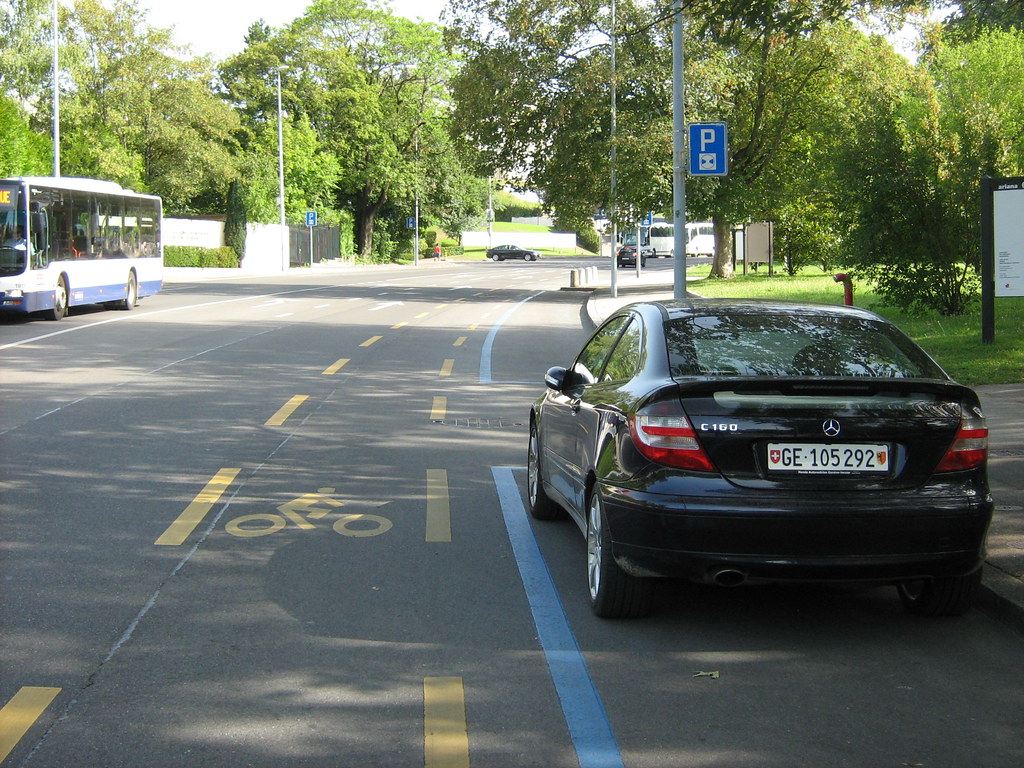
13. Maintain an Appropriate Safety Margin
The space cushion around your vehicle is your most vital defense on the road, yet it’s often overlooked or intentionally compromised by impatient drivers. Maintaining an appropriate safety margin, specifically a safe driving distance behind the vehicle in front of you, is paramount. This isn’t merely a suggestion; it’s a critical rule that directly influences your ability to react safely and prevent collisions, safeguarding yourself and others.
A widely recommended technique for maintaining this crucial distance is the ‘four-second rule.’ To apply it, pick a stationary object ahead, like a sign or a tree, that the vehicle in front of you is about to pass. As their rear bumper passes the object, begin counting ‘one thousand one, one thousand two, one thousand three, one thousand four.’ If your front bumper reaches that same object before you finish counting to four, you are too close and need to back off.
This distance is not static and must be adjusted based on various factors. For instance, traveling at 55 miles per hour requires significantly different stopping distances for different vehicle types due to their mass and braking capabilities. A farm tractor needs 50 feet, a snow plow 70 feet, a car 243 feet, a semi-truck 300 feet, and an emergency vehicle 500 feet. These varying requirements underscore why a flexible, adaptable approach to safety margins is essential, especially when following larger vehicles.
Furthermore, it is especially important to give vulnerable road users, like motorcycles, even more space than you would a car. Motorcycles offer far less protection in the event of a collision, so adding a few extra feet between your vehicle and a bike can be life-saving for the rider. Consciously building and maintaining these safety margins around your car provides the necessary time and space to react to unexpected events, turning potential crises into manageable situations.
Read more about: The Unseen Burdens: Tragic Realities That Defined Sasha and Malia Obama’s Public and Private Lives

14. Turn the Wheel Only at the Right Time
Driving a car involves a delicate dance of timing and precision, especially when it comes to steering. Knowing precisely when to initiate and complete a turn of the steering wheel is a mark of a skilled driver. Many common errors, from clipping curbs to drifting into adjacent lanes, stem from poor steering timing. Mastering this nuance is crucial for maintaining road safety and executing smooth, controlled maneuvers around other road users.
One common mistake, particularly when making left turns, is turning the wheel too early while waiting in the intersection. It’s vital to keep your wheels pointed straight until the exact moment you intend to initiate the turn. If you are rear-ended while your wheels are already turned, your vehicle could be propelled into oncoming traffic, creating a far more dangerous scenario. By waiting until the last moment, you mitigate this risk and retain better control.
Beyond left turns, the principle extends to all steering inputs. When navigating winding roads or responding to unexpected situations, instead of fixating on the steering wheel’s orientation, pin your eyes on your target—where you want your vehicle to go. Your body will intuitively guide your hands to adjust the steering wheel based on the visual feedback you’re receiving. This technique helps you maintain a clear objective and makes steering feel more natural and responsive.
Developing this precise timing requires consistent practice and keen observation. Pay attention to your entry and exit points for turns, the speed at which you are traveling, and the arc your vehicle needs to trace. Over time, you will develop an intuitive sense for when to turn the wheel, allowing you to perform safe, accurate turns while remaining within your lane and smoothly integrating with the flow of traffic.
Read more about: 15 Classic Cars You Might Want To Skip: An Expert Guide for Discerning Collectors

15. Know How to Merge Into Traffic
Merging into traffic is a common driving maneuver that often causes anxiety, but when executed correctly, it should be a seamless and safe process. Poor merging techniques are a significant contributor to traffic jams and can escalate into dangerous situations. To become a truly better driver, mastering the art of merging smoothly and efficiently is a fundamental skill that reduces stress for everyone on the road.
The key to successful merging lies in understanding and applying the ‘zipper merge’ concept. This involves using both lanes of traffic up to the merge point, and then alternating cars, like the teeth of a zipper, into the single lane. Instead of forcing your way in or stopping prematurely, maintain your speed, utilize the full length of the merge lane, and look for an appropriate gap to gently ease into the flow of traffic without disrupting it.
Your turn signals are your best friends in this process. Many drivers view blinkers as a mere courtesy, but they are essential communication tools that signal your intentions to other drivers, helping to prevent bad things from happening. Before you even begin to merge or switch lanes, activate your turn signal. This gives surrounding drivers advance warning of your intentions, allowing them to adjust their speed or position to accommodate you, significantly reducing the risk of being cut off or causing a surprise reaction.
Even with your blinker on and mirrors checked, always perform a quick glance over your shoulder before committing to a merge or lane change. This ‘head check’ is crucial for confirming your blind spot is clear. While mirrors provide an excellent view, they can never fully eliminate the small area where a motorcycle or smaller vehicle might be hidden. By combining your turn signal, mirror checks, and a shoulder check, you maximize your awareness and ensure a safe, confident merge every time.
Read more about: 15 Classic Cars You Might Want To Skip: An Expert Guide for Discerning Collectors
Embracing these advanced awareness techniques and fostering a proactive mindset are the final brushstrokes in painting a picture of driving mastery. It’s about cultivating a serene confidence that comes from anticipating, preparing, and executing with precision. By integrating these ‘next-level’ tricks into your daily driving habits, you’re not just enhancing your own skills; you’re actively contributing to safer roads for every single person you share them with. So, take the wheel with intention, practice with purpose, and elevate your journey to becoming the truly exceptional driver you aspire to be. The road ahead is clearer, safer, and ultimately, more enjoyable when you drive with full awareness and a proactive spirit.



